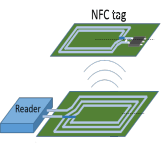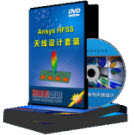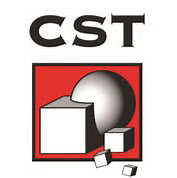等幅激励点源线阵方向图
05-08
%ArrayPatGain - This program is an updated and combined version of the programs "ANTGAIN
% and "ARRAYPATGAIN" in the 4th edition of Kraus's Electromagnetics. This program
% computes and plots the field pattern of a uniform linear array of sources.
clear;
timesrun=0;
while timesrun<1000,
if timesrun==0,
SP=0.5;
PH=0;
N=5;
MF=1;
else,
SP=input('Enter element spacing in wavelengths: ');
PH=input('Enter phase difference between elements in degrees: ');
N=input('Enter number of elements: ');
MF=input('Enter pattern multiplication factor: ')';
end;
% This version modified to include isotropic AND short dipole sources
% both of which are displayed on the same polar plot. This version
% does not do phase plots.
% Compute fields for plotting
A=0.01:0.01:6.27; % Angle over 2pi radians
U=(2*pi*SP*cos(A)+(pi*PH/180))/2; % compute argument
FP=(sin(N*U)./sin(U)); % compute isotropic electric field
FPD=(sin(N*U)./sin(U)).*cos(A); % computer dipole electric field
R=MF.*abs(FP); % multiply as appropriate
Rdipole=MF.*abs(FPD); % compute for array of short dipoles
pause(0.9);
% compute the beam area in theta
B=0.01:0.01:3.14; % B is theta -- the angle from 0 degrees
% 0 <theta (B) < 180 degrees
W=(2*pi*SP*cos(B)+(pi*PH/180))/2; % compute psi -- phase shift
PP=(sin(N*W)./sin(W)).^2; % compute unnormalized power
Z=0.01*sin(B).*PP; % differential power is PP*sin(theta)*d(theta)
SUM=sum(Z); % integrate the elements over 180 degrees
DR=(2*(N^2))/SUM; % numerical directivity is Pmax/Pavg.
% N^2 is Pmax
% Not sure of 2; because I only did pi?
DBI=10*log10(DR); % express in dBi
% REPEAT FOR DIPOLE
% compute the beam area in theta
B=0.01:0.01:3.14; % B is theta -- the angle from 0 degrees
% 0 <theta (B) < 180 degrees
W=(2*pi*SP*cos(B)+(pi*PH/180))/2; % compute psi -- phase shift
PP=(sin(N*W)./sin(W).*cos(B)).^2; % compute unnormalized power
Z=0.01*sin(B).*PP; % differential power is PP*sin(theta)*d(theta)
SUM=sum(Z); % integrate the elements over 180 degrees
DRdipole=(2*(N^2))/SUM; % numerical directivity is Pmax/Pavg.
% N^2 is Pmax
% Not sure of 2; because I only did pi?
DBIdipole=10*log10(DRdipole); % express in dBi
theta=(0:2*pi/626:2*pi); % plot antenna pattern in polar coordinates
% plot isotropic pattern
polar(theta,(round(R*100))/100,'r');
hold on;
polar(theta,(round(Rdipole*100))/100,'g:');
title(['Field pattern of ',num2str(N),' sources spaced by ',num2str(SP),' lambda, ','phase delta= ',num2str(PH),' deg']);
text(max(R),max(R),['Dtheta = ',num2str((round(DBI*100))/100),' dBi']);
text(max(R),max(R)-1,['Dphi = ',num2str((round(DBIdipole*100))/100),' dBi']);
hold off;
sep=max(R)/20;
xcent=sep*((-(N-1)/2)-1);
for elcount=1:N
xcent=xcent+sep;
ycent=0;
radius=sep/5;
xp=xcent+[-radius:radius/10:radius];
yp=ycent+real(sqrt((radius^2)-(xp-xcent).^2));
patch(xp,yp,'k');
patch(xp,-yp,'k');
end;
rp=input('Enter 1 for rectangular plot: ');
if rp==1
figure(2);
plot(theta*(180/pi),R);
grid on;
zoom on;
title(['Field Pattern of ',num2str(N),' sources spaced by ',num2str(SP),' lambda, ','phase delta= ',num2str(PH),' deg']);
xlabel('Angle (deg)');
ylabel('Amplitude (linear)');
end;
logp=input('Enter 1 for dB plot: ');
if logp==1
figure(3);
plot(theta*(180/pi),10*log10(abs(R)));
grid on;
title(['Field Pattern of ',num2str(N),' sources spaced by ',num2str(SP),' lambda, ','phase delta= ',num2str(PH),' deg']);
xlabel('Angle (deg)');
ylabel('Amplitude (dB)');
end;
powerp=input('Enter 1 for power pattern: ');
if powerp==1
figure(4);
plot(theta*(180/pi),20*log10(abs(R)));
grid on;
title(['Power Pattern of ',num2str(N),' sources spaced by ',num2str(SP),' lambda, ','phase delta= ',num2str(PH),' deg']);
xlabel('Angle (deg)');
ylabel('Amplitude (dB)');
end;
timesrun=timesrun+1;
done=input('Enter 1 to modify parameters: ');
if done~=1,
timesrun=1000;
end;
end;
% and "ARRAYPATGAIN" in the 4th edition of Kraus's Electromagnetics. This program
% computes and plots the field pattern of a uniform linear array of sources.
clear;
timesrun=0;
while timesrun<1000,
if timesrun==0,
SP=0.5;
PH=0;
N=5;
MF=1;
else,
SP=input('Enter element spacing in wavelengths: ');
PH=input('Enter phase difference between elements in degrees: ');
N=input('Enter number of elements: ');
MF=input('Enter pattern multiplication factor: ')';
end;
% This version modified to include isotropic AND short dipole sources
% both of which are displayed on the same polar plot. This version
% does not do phase plots.
% Compute fields for plotting
A=0.01:0.01:6.27; % Angle over 2pi radians
U=(2*pi*SP*cos(A)+(pi*PH/180))/2; % compute argument
FP=(sin(N*U)./sin(U)); % compute isotropic electric field
FPD=(sin(N*U)./sin(U)).*cos(A); % computer dipole electric field
R=MF.*abs(FP); % multiply as appropriate
Rdipole=MF.*abs(FPD); % compute for array of short dipoles
pause(0.9);
% compute the beam area in theta
B=0.01:0.01:3.14; % B is theta -- the angle from 0 degrees
% 0 <theta (B) < 180 degrees
W=(2*pi*SP*cos(B)+(pi*PH/180))/2; % compute psi -- phase shift
PP=(sin(N*W)./sin(W)).^2; % compute unnormalized power
Z=0.01*sin(B).*PP; % differential power is PP*sin(theta)*d(theta)
SUM=sum(Z); % integrate the elements over 180 degrees
DR=(2*(N^2))/SUM; % numerical directivity is Pmax/Pavg.
% N^2 is Pmax
% Not sure of 2; because I only did pi?
DBI=10*log10(DR); % express in dBi
% REPEAT FOR DIPOLE
% compute the beam area in theta
B=0.01:0.01:3.14; % B is theta -- the angle from 0 degrees
% 0 <theta (B) < 180 degrees
W=(2*pi*SP*cos(B)+(pi*PH/180))/2; % compute psi -- phase shift
PP=(sin(N*W)./sin(W).*cos(B)).^2; % compute unnormalized power
Z=0.01*sin(B).*PP; % differential power is PP*sin(theta)*d(theta)
SUM=sum(Z); % integrate the elements over 180 degrees
DRdipole=(2*(N^2))/SUM; % numerical directivity is Pmax/Pavg.
% N^2 is Pmax
% Not sure of 2; because I only did pi?
DBIdipole=10*log10(DRdipole); % express in dBi
theta=(0:2*pi/626:2*pi); % plot antenna pattern in polar coordinates
% plot isotropic pattern
polar(theta,(round(R*100))/100,'r');
hold on;
polar(theta,(round(Rdipole*100))/100,'g:');
title(['Field pattern of ',num2str(N),' sources spaced by ',num2str(SP),' lambda, ','phase delta= ',num2str(PH),' deg']);
text(max(R),max(R),['Dtheta = ',num2str((round(DBI*100))/100),' dBi']);
text(max(R),max(R)-1,['Dphi = ',num2str((round(DBIdipole*100))/100),' dBi']);
hold off;
sep=max(R)/20;
xcent=sep*((-(N-1)/2)-1);
for elcount=1:N
xcent=xcent+sep;
ycent=0;
radius=sep/5;
xp=xcent+[-radius:radius/10:radius];
yp=ycent+real(sqrt((radius^2)-(xp-xcent).^2));
patch(xp,yp,'k');
patch(xp,-yp,'k');
end;
rp=input('Enter 1 for rectangular plot: ');
if rp==1
figure(2);
plot(theta*(180/pi),R);
grid on;
zoom on;
title(['Field Pattern of ',num2str(N),' sources spaced by ',num2str(SP),' lambda, ','phase delta= ',num2str(PH),' deg']);
xlabel('Angle (deg)');
ylabel('Amplitude (linear)');
end;
logp=input('Enter 1 for dB plot: ');
if logp==1
figure(3);
plot(theta*(180/pi),10*log10(abs(R)));
grid on;
title(['Field Pattern of ',num2str(N),' sources spaced by ',num2str(SP),' lambda, ','phase delta= ',num2str(PH),' deg']);
xlabel('Angle (deg)');
ylabel('Amplitude (dB)');
end;
powerp=input('Enter 1 for power pattern: ');
if powerp==1
figure(4);
plot(theta*(180/pi),20*log10(abs(R)));
grid on;
title(['Power Pattern of ',num2str(N),' sources spaced by ',num2str(SP),' lambda, ','phase delta= ',num2str(PH),' deg']);
xlabel('Angle (deg)');
ylabel('Amplitude (dB)');
end;
timesrun=timesrun+1;
done=input('Enter 1 to modify parameters: ');
if done~=1,
timesrun=1000;
end;
end;
相关文章:
- 四元阵,这样设置的激励,S1,1+2+3+4代表什么意思啊(05-08)
- 请问hfss能不能设置两个相位相差90度的激励?(05-08)
- 改变激励幅度来改变天线的旁瓣(05-08)
- 关于HFss13设置激励的问题,求助(05-08)
- CST仿真天线阵,多端口激励下为什么不能进行自适应网格划分?(05-08)
- HFSS激励求助(05-08)
天线设计培训教程推荐








